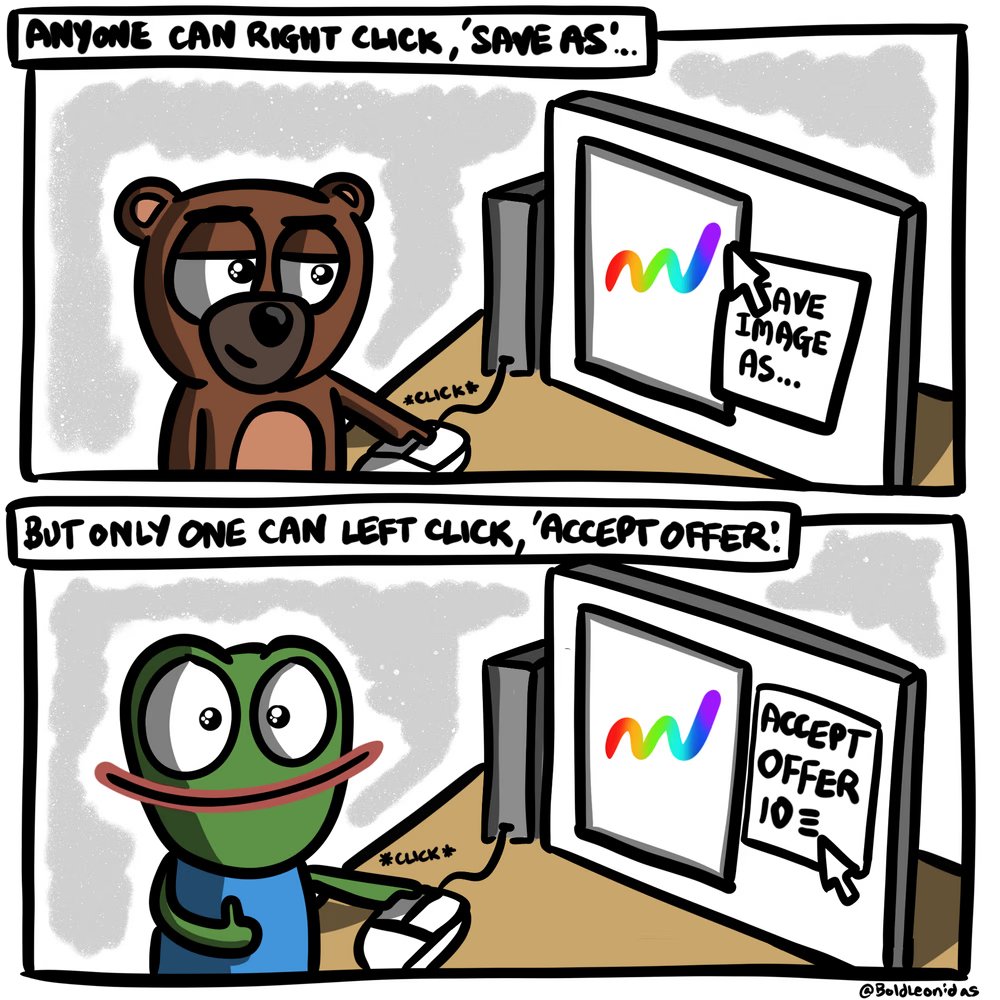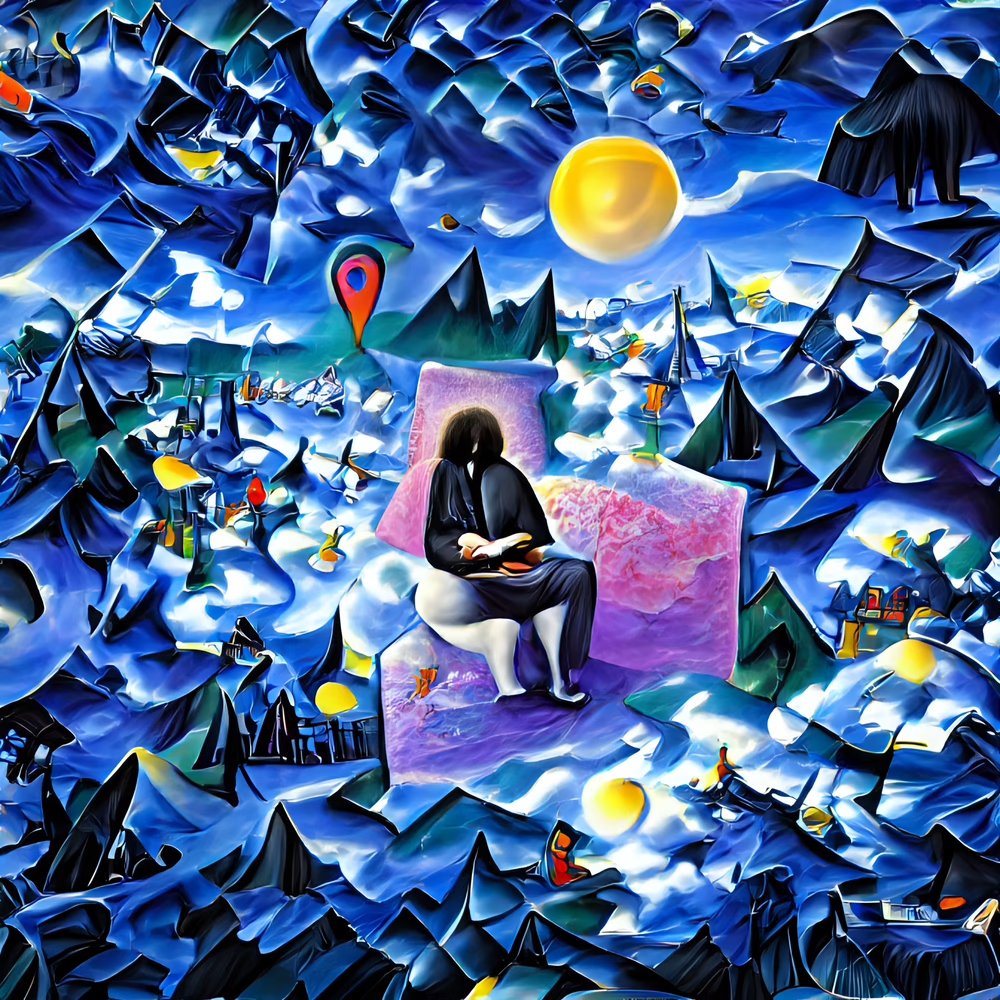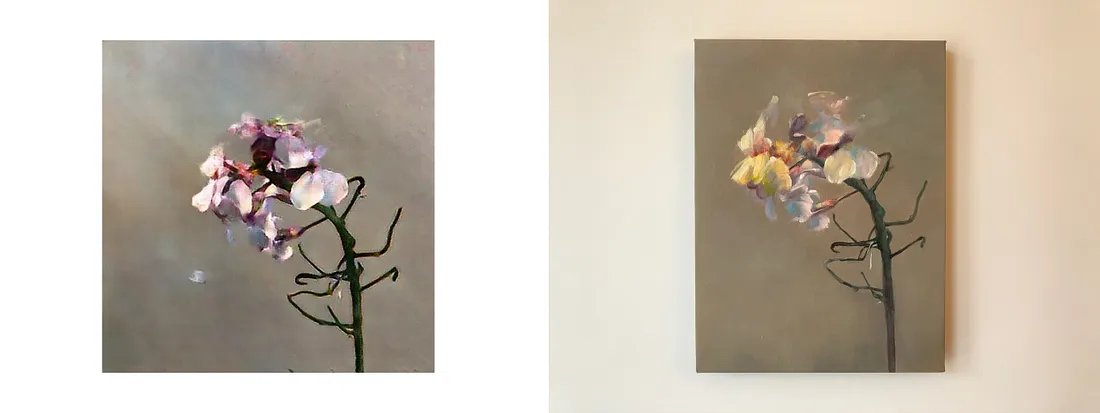The Interview I Art Collector Delronde
Aristotle once said, “The aim of art is to represent not the outward appearance of things, but their inward significance.” This sentiment serves as a powerful reminder that collecting art transcends aesthetics; it’s about capturing meaning and essence.
In this installment of Kate Vass's interview series with digital art collectors, we speak with Delronde. Much like a curator selecting pieces for a museum, Delronde approaches his collection with discernment and a profound appreciation for the narratives embedded in each work. For him, collecting is not a matter of simple acquisition; it’s a mindful process, with each piece thoughtfully chosen for its unique contribution to the collection. His approach is unhurried and intentional, honoring the individuality of each artwork.
Delronde’s philosophy of collecting goes beyond the present moment. Reflecting on Aristotle’s words, he notes, "To me, the 'inward significance' of digital, generative, and AI art all flows back to one thing: human ingenuity. Art that celebrates or pushes beyond technical limitations resonates deeply with me, leaving you breathless, wondering, 'How did they do that?' Silicon chips are the cathedrals of our era, and digital art, the frescoes adorning them."
We hope you find this interview insightful, offering a glimpse into Delronde’s thoughtful perspective.
Learning To See: We are made of star dust #2 by Memo Akten, created 2017, minted in 2024
KV: Can you share some insights into your background and what motivated you to start collecting digital and on-chain art?
D: I've been tinkering with and programming on computers since I was very young but I had not paid attention to digital art until NFTs. Specifically, ArtBlocks with its marriage of generative art and blockchains made me realize that the same skills required to build the software you're using to read this text now can also be applied to create beautiful art. Software, instead of being purely utilitarian can also create beauty, and blockchains enable you to own and transact these in their native "executable" form. From there I've slowly grown to appreciate all kinds of digital art.
Chromie Squiggle 3009 by Snowfro, 2021
KV: What was the first piece of digital art you acquired, and how did it influence your approach to future purchases?
D: This Colorglyph was one of my first acquisitions, back in October 2020. I knew nothing about art or NFTs at the time. I saw autoglyphs trading for 6e (~2k USD) and thought they were interesting, but way too "expensive". So I bought a colorglyph for 200$ instead. I've kept it to this day as a reminder to trust my instincts, do my research and that sometimes, "cheap" can cost you dearly.
Colorglyph #307 by Larva Labs, 2019
KV: What draws you to collecting historical generative and AI pieces, and how important is their preservation to you?
D: I believe we're in an incredibly special moment in time. Right on the cusp of widespread adoption of two major technologies. AI which promises nearly free and infinite digital content and blockchains which provide provenance, scarcity and ability to transact. Most people are still underestimating how much impact AI is going to have on our lives. The tokenization of digital art and the birth of a new form of intelligence will occur only once. I'm incredibly thankful to have been in the right place and the right time to collect meaningful works of both these significant milestones.
Early AI art in particular is personally very meaningful to me. It's hard to overstate how big the AI revolution will be and just how fast progress has been made. I keep going back to this to remind myself what used to be considered "impossible". And in 3(!) years, we're well past that. In a span of ~7 years or so we've gone from a highly experimental form of art that only those at the cutting edge of technology and art were capable of creating to something anyone in the world can use. I consider the 2015-2022 period very special, something that cannot be repeated.
AlignDraw, A stop sign is flying in blue skies #3, by Elman Mansimov (2015), minted in 2023
KV: In your opinion, how does on-chain verification add value to digital artworks beyond establishing provenance? Does the underlying blockchain play a crucial role in the collecting process?
D: I believe blockchains are a 10x improvement in transacting digital art over traditional mechanisms. They provide 24/7 global liquidity, instant settlement, transparent price discovery, and unforgeable provenance. In addition, the collector's collection is public by default. I have discovered so many new artists and works just by browsing the collections of others. It's in stark contrast to most high value traditional art which are locked away inside people's homes only seen by the owner (or worse, not seen at all, in case of freeports). Putting art onchain means that anyone can enjoy it for free while having a single indisputable owner.
As to the blockchain itself, it matters. But it does not matter as much as people think. I do collect on Tezos and other chains. They do deserve a discount because it's unproven if they will stay around as long as ETH, but it probably should not be as severe as it is right now.
#26 - RCSA, LCAO by BoldLeonidas, 2023
KV: You’ve highlighted Deafbeef as the king of on-chain art. What qualities do you think set his work apart from others in this space?
D: Deafbeef is one of the few cryptoartists who fully utilize and explore the blockchain as a medium. Tokens with user customizable audiovisual outputs, tokens that degrade on transfer, onchain slot machines, innovative ways to tie physicals to disappearing tokens and many others that show deep technical mastery of many fields and serve as astute commentary on the space.
HASHMARKS #63 by Deafbeef, 2023
KV: Are there certain artworks in your collection that hold a special significance for you or have an interesting story of how it was acquired?
D: As a whole, my early AI art collection is very special to me. Others like JediWolf have a more comprehensive collection, or CyborgDAO have more pieces from significant artists. I've landed somewhere in the middle with at least one piece from every artist and collection that I consider significant. Fellow AI art collectors know how difficult it is already to acquire these works, and I think it is going to get exponentially harder to assemble every subsequent set.
As an individual work, this piece by Califormetry stands out. A custom commission in his signature "vector hyperrealism" style of a place that I owe a lot to.
The Golden State by Califormetry, 2023
KV: What criteria do you use to assess an artist or artwork before adding it to your collection?
D: When I collect a work, I ask myself if I'm collecting for the work itself, the artist, the narrative/story or the timestamp. Most works only have one or two elements going for them, but my most prized pieces have all of the elements. For example, a genesis period Botto or an aesthetic "Day 0" squiggle. Recently I've begun to appreciate a fifth factor, which is the community around the artist and their works. The standout example here is XCOPY, the impromptu performance with the "Black Hole" piece was only possible because of the dedicated community.
Communicate Displace by Botto, 2022
KV: How do you incorporate digital art into your daily life? Do you display pieces in your home, or engage with them in other ways? Do you also own traditional artworks, like those by David Young?
D: I focus almost exclusively on digital art. The only exceptions are a few Ukiyo-e prints (Kawase's Meguro Fudō is a personal favorite), or cases where the physical is integral to the NFT like Deafbeef's Hashmarks or the oil painting of David Young's GAN art which is very interesting to me as an early example of human art being influenced by AI art.
It is unfortunate that most of us spend the majority of our waking hours staring into screens and yet the only exposure most people get to digital art is their wallpaper. I greatly enjoy browser extensions like arttab.xyz (or Google Arts and Culture if you prefer traditional art) which show you a new piece of art whenever you open a new tab.
Meguro Fudo by Hasui Kawase
KV: How do you perceive your role within the digital art ecosystem? What impact do you hope your collection will have on the future ? Do you see it a legacy?
D: I try to keep a low profile, I would rather let my collection speak for itself to those who share similar tastes. I collect for my personal satisfaction, and because I believe some of these works will be almost impossible to acquire for any reasonable price in the future. Time will tell if I'm right on the significance of these works, and I'm willing to be very patient.
AI Generated Nude Portrait #7 Frame #111 by Robbie Barrat, 2018
KV: If you had to describe your collection in three words, what would they be?
D: I can do it in one: Pioneers. I've aimed to collect digital works and artists that broke new ground in some significant way. My first goal when I started building this collection was to acquire a full set of Artblocks Curated Season 1-8, and am now focusing on early AI art. I hope to call it done soon.
Learning Nature (b38,4016,16) by David Young, 2018
KV: Could you tell us the story behind the name Delronde? Does it hold any particular meaning?
D: Ha ha, it is based on Elrond from Lord of the Rings, and my PFP is a pixel version of Elrond commissioned from thepixelportraits.me.
Math Art (1980-1995) - Math Art 95 - No. 9 by Herbert W. Franke
KV: Aristotle said, “The aim of art is to represent not the outward appearance of things, but their inward significance.” How do you believe digital art, generative art and AI art reflect this idea?
D: To me, the "inward significance" of digital, generative and ai art all flow back to one thing: Human ingenuity. Art that celebrates or surpasses technical limitations is what resonates with me. Where you are left breathless wondering: How did they do that? Silicon chips are the cathedrals of our era, and digital art the frescoes.
K-Meanearest Neighbors by Helena Sarin & Dmitri Cherniak, 2021
***
*The responses provided in this interview have been preserved in their original form, with no alterations to the interviewee's stylistic choices or grammar. - Kate Vass
Delronde on X: @delronde
Collection: https://opensea.io/0x183AbE67478eB7E87c96CA28E2f63Dec53f22E3A












